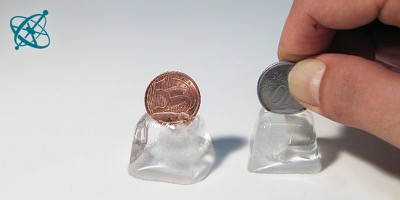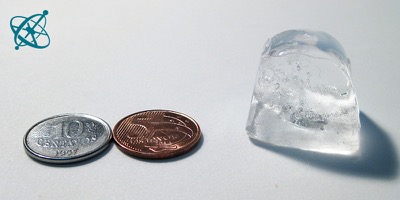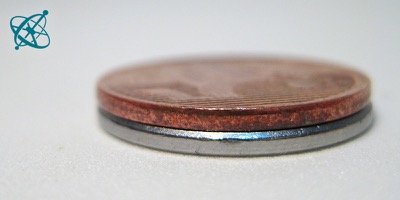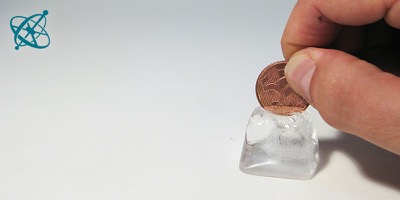 www.sciensation.org | Ciênsação hands-on experiments are published as Open Educational resources under a Creative Commons Attribution-ShareAlike 4.0 International License.
www.sciensation.org | Ciênsação hands-on experiments are published as Open Educational resources under a Creative Commons Attribution-ShareAlike 4.0 International License.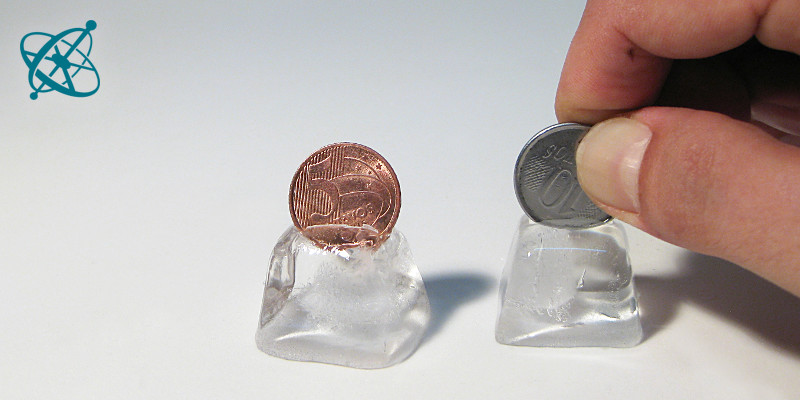
It is easier to press 5 cents into an ice cube than 10 cents.
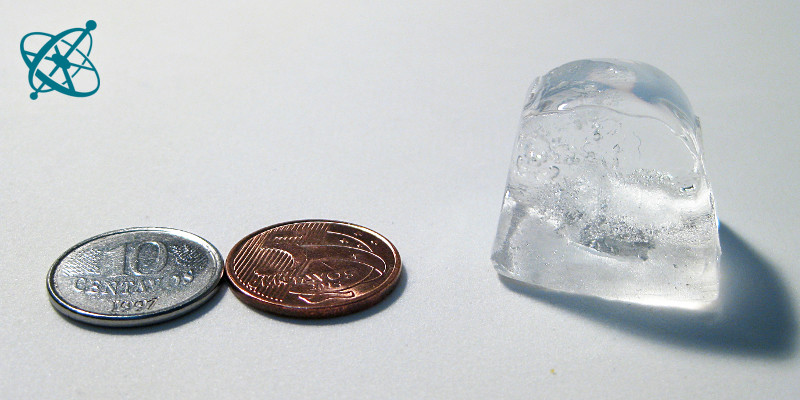
At least if the 5 cents are covered with copper…
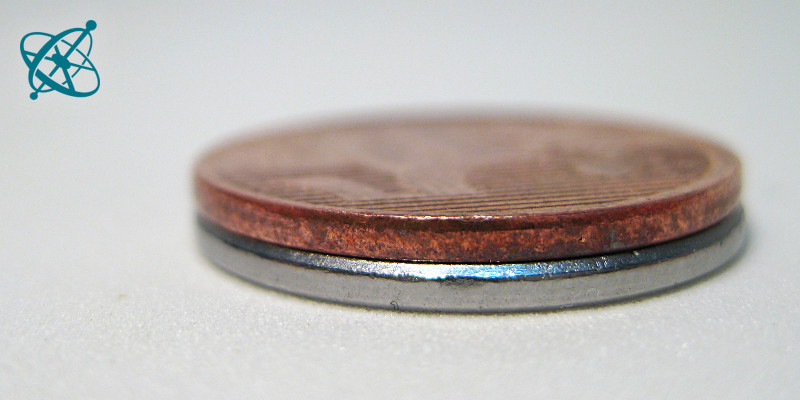
…and the 10 cents are made of steel.
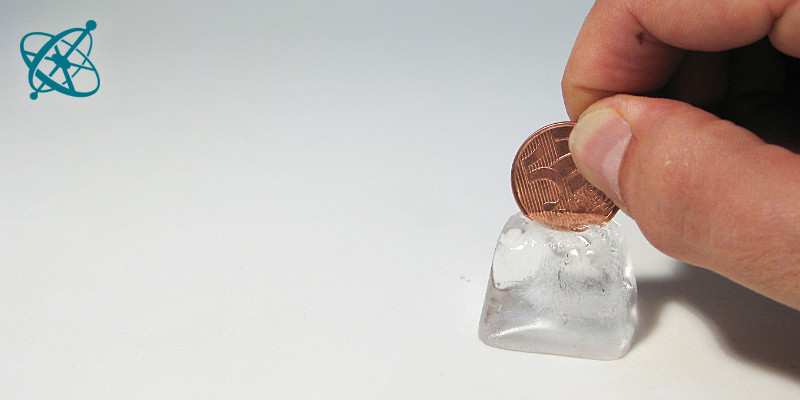
The copper coin also feels colder in the process.
Cutting through ice
If you can find small coins of similar size but different materials, such as copper and steel, try to push them into an ice cube: You will note that copper coins are easier to press into ice – and feel colder while doing so.
Some metals conduct heat better than others.
Copper and steel coins of roughly the same size
Plastic dish
Press coins made from different metals straight into an ice cube.
1. Do you feel a difference? If so, how do you explain this?
There are two main differences to note, namely the ease with which the coins 'cut' through the ice and the time it takes to feel the cold on the fingers. Both effects have the same origin: Differences in the thermal conductivity.
The coins absorb heat from the fingers and transfer it to the ice surface. Copper transfers heat roughly 10 times faster than steel. 'Red' coins (usually steel or zinc covered with copper) therefore feel cold faster – and melt ice quicker – than 'silver' coins (usually made from stainless steel).
